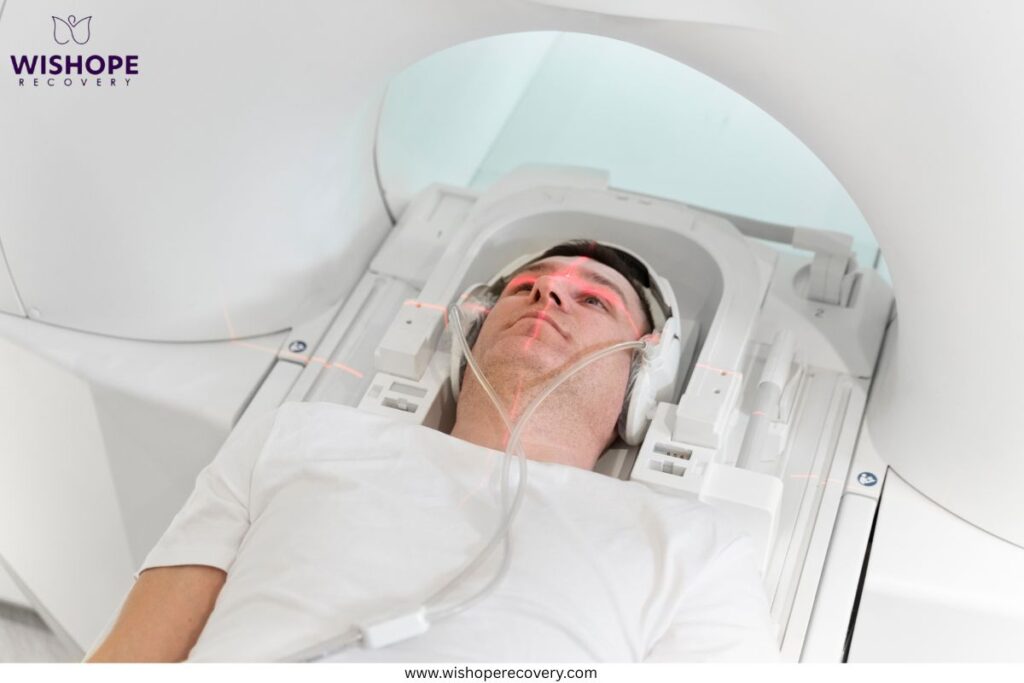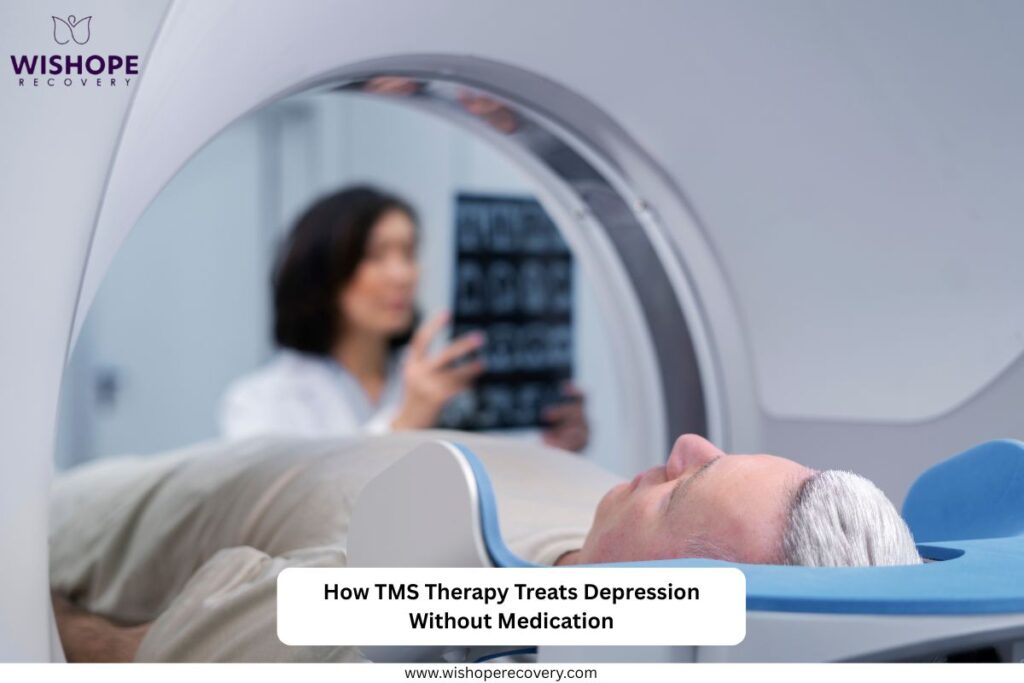Living with depression that doesn’t improve with medication? You’re not alone, and you’re not out of options.
Millions of people struggle with treatment-resistant depression, and traditional treatments like antidepressants or talk therapy just aren’t enough. The good news is that a powerful, drug-free solution exists: it’s called TMS Therapy, and it’s changing lives every day.
Did you know? Around 30% of individuals with depression find little to no relief from antidepressants. This is where transcranial magnetic stimulation therapy comes in. Safe, effective, and non-invasive, this therapy is providing new hope for those who feel like they’ve tried everything.
Let’s take a closer look at how TMS Therapy works and why more people are choosing it as a path to real recovery.
What Is TMS Therapy?
Transcranial magnetic stimulation therapy uses targeted magnetic pulses to stimulate the areas of the brain that regulate mood. It’s completely non-invasive and doesn’t require sedation, hospitalization, or medication.
This therapy is FDA-approved for treatment resistant depression and is performed in an outpatient setting. Most importantly, it doesn’t involve introducing chemicals into your body. Instead, it helps your brain heal naturally by “waking up” underactive regions associated with depression.
Who Should Consider TMS Therapy?
TMS is designed for individuals who:
- Have tried two or more antidepressants with little to no success
- Experience harsh side effects from medication
- Prefer a non-drug alternative for long-term healing
- Want to feel better without emotional numbness or dependency
If that sounds like you, you’re not alone. At Wishope Recovery, we understand how overwhelming it can be to seek help again after repeated disappointment. That’s why we offer cutting-edge services like TMS for treatment-resistant depression in a compassionate, stigma-free environment.
How Does Transcranial Magnetic Stimulation Therapy Work?
Understanding how transcranial magnetic stimulation therapy works can help ease any nerves you might have before starting treatment. The process is simple, comfortable, and completely non-invasive.
Here’s a more detailed look at what happens during a typical TMS Therapy journey:
1. Initial Evaluation
Before starting TMS, you’ll meet with a licensed mental health professional who will carefully review your medical history, mental health background, current symptoms, and any treatments you’ve tried in the past. This step is all about getting to know you, your struggles, your needs, and your goals for recovery.
They’ll determine if you meet the clinical criteria for treatment resistant depression and whether TMS therapy is a safe and effective option for your situation. This evaluation might also include a brief questionnaire or mental health assessment to better understand your current state.
2. Brain Mapping
Once you’re approved for treatment, the next step is a process called brain mapping. Don’t worry; it’s not as technical or intimidating as it sounds.
During your first session, a technician will use the TMS machine to find the exact area of your brain that needs stimulation. This area, often the left prefrontal cortex, is typically underactive in people with depression. The goal here is precision. By locating the right spot and setting the right intensity for the magnetic pulses, we ensure the treatment is both effective and tailored to your brain’s unique patterns.

3. The Treatment Sessions
Once the mapping is done, your ongoing TMS-therapy sessions can begin. Each session lasts between 20 to 40 minutes. You’ll be seated in a comfortable chair in a calm, quiet room. A technician places a small, padded magnetic coil against your scalp, usually just above your forehead.
As the machine sends magnetic pulses into the brain, you may feel a light tapping or clicking sensation on your scalp. Some people compare it to a gentle woodpecker or rhythmic tapping with a fingertip. Most patients say it’s a little strange at first but not painful. Over time, many find it relaxing, even meditative.
There’s no anesthesia or sedation required. You’ll remain fully awake, and once your session is over, you can immediately return to your daily routine; no recovery time is needed.
4. Treatment Schedule and Duration
TMS Therapy works best when it’s consistent. That’s why it’s typically delivered five days a week over a period of four to six weeks, depending on your treatment plan.
That may sound like a big commitment, but think of it like this: it’s a short-term investment in long-term wellness.
Many people begin to notice positive changes in mood, energy, focus, and motivation within the first few weeks. And for those struggling with treatment resistant depression, these changes can be life-changing.
What Are the Benefits of TMS?
TMS for treatment-resistant depression offers several advantages over traditional methods:
- No systemic side effects like weight gain, insomnia, or sexual dysfunction
- No daily medication to remember
- No recovery period after sessions
- Long-term results backed by clinical studies
- Safe and FDA-approved
For many people at Wishope Recovery, this therapy has been the best treatment for resistant depression they’ve ever tried. It offers not just symptom relief but a real sense of hope and emotional clarity.
Is TMS Safe?
It is considered safe and is well-tolerated by most people. The most common side effect is mild discomfort on the scalp or a slight headache during or after treatment. These effects usually subside after the first few sessions.
Unlike medications, TMS doesn’t alter your body chemistry. That means no dependency, withdrawal symptoms, or long-term complications tied to drug use.
Who Is Not a Candidate?
While TMS is highly effective for many, it may not be suitable if:
- You have a history of seizures
- You have metal implants or devices in or near your head
- You’re currently dealing with certain neurological conditions
Conclusion
If depression has made your world feel smaller, colder, or darker, and nothing else has worked, it might be time to try something different.
TMS Therapy could be the solution you’ve been waiting for. It’s gentle, proven, and doesn’t require a single pill. More importantly, it treats your brain without changing who you are.
At Wishope Recovery, we’re here to help you take the next step with confidence. Whether you’re exploring treatment-resistant depression therapy for the first time or searching for a fresh start after years of struggle, our team is ready to support you.

